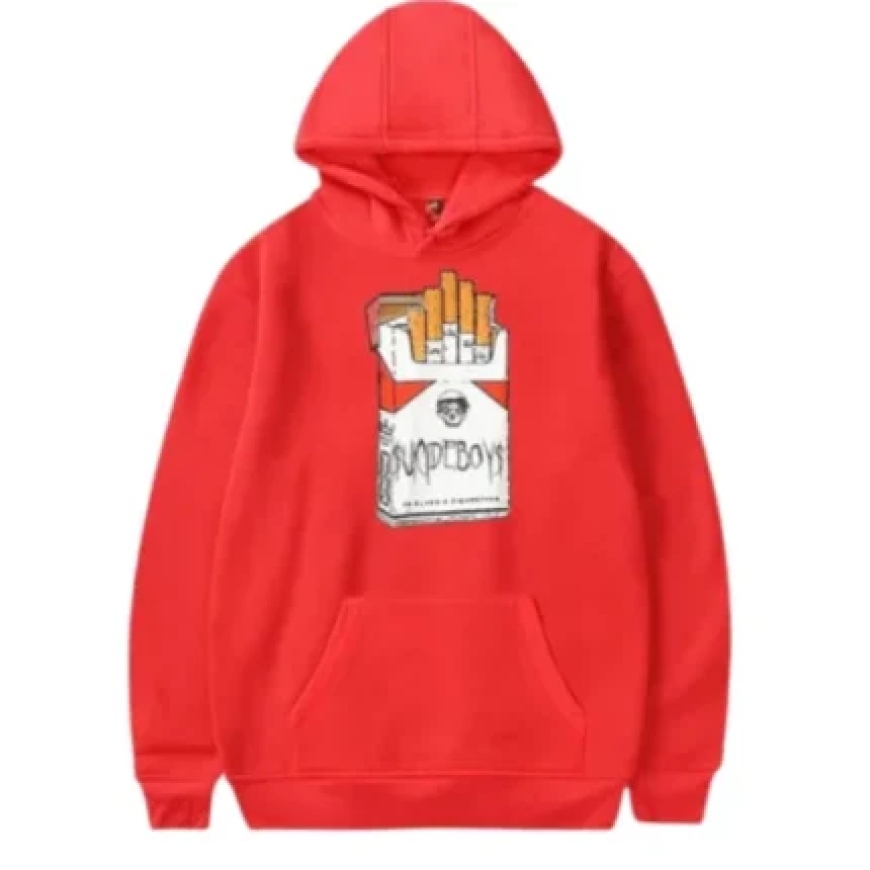Stay True to the Scene with Suicideboys Collections

In the ever-evolving world of streetwear, few brands and collectives manage to strike a genuine chord with their audience like the $uicideboy$. More than just $uicideboy$ merch a hip-hop duo, $uicideboy$ has become a cultural movement, influencing not only music but also fashion with their raw authenticity, unfiltered emotion, and underground appeal. The $uicideboy$ collections are more than just merchthey are a form of self-expression and a uniform for those who live on the fringes, resonate with the duos themes, and want to stay true to the scene that raised them.
The $uicideboy$ have crafted a unique space for themselves by staying unapologetically real in both their music and visual identity. With an aesthetic rooted in punk, goth, metal, and Southern hip-hop, their merchandise reflects a dark, grungy vibe thats both nostalgic and fresh. Their apparel doesnt just exist for fan serviceits an extension of their brand and message. Each piece is designed to speak directly to those who understand the pain, rebellion, and introspection that their lyrics so often portray.
The appeal of $uicideboy$ collections lies in their consistency with the duos ethos. Unlike many mainstream artists who treat merchandise as a secondary stream of income, $uicideboy$ treat their collections as an integral part of their artistry. They design clothing with the same grit and emotion as their tracks, creating pieces that feel personal and intimate. Hoodies emblazoned with cryptic lyrics, t-shirts featuring haunting visuals, and accessories bearing symbols of death, rebirth, and resistance all contribute to a narrative that feels raw and real.
This attention to emotional detail is why fans find themselves so deeply connected to the brand. Wearing $uicideboy$ merch is often more than a fashion choiceits a declaration. It says something about the wearers identity, values, and experiences. The collections represent a kind of armor for the emotionally scarred, a signifier for those who find solace in darkness and strength in vulnerability. In a world that often demands conformity and smiles, these pieces offer a place to hide, to be seen, and to belong.
From the early days of DIY drops to the increasingly sophisticated capsule collections released today, the evolution of $uicideboy$ merchandise mirrors their artistic journey. Early releases had a rough, underground feel that matched their SoundCloud beginnings, while newer collections showcase refined designs that still hold true to their original spirit. Despite the growth in production quality, theyve never strayed from the gritty authenticity that earned them their cult following. That consistency has helped them maintain their credibility in both music and fashion circles.
One of the defining characteristics of $uicideboy$ collections is their limited nature. Each drop feels like an event, a moment in time that fans rush to be part of. The scarcity of the pieces enhances their cultural value, turning them into coveted items that embody a connection with the artists and the larger community. Owning a piece from one of these collections often feels like holding onto a moment in the bands timelinea snapshot of a mood, an era, or a message that resonated deeply.
The visuals in these collections also play a key role in storytelling. Imagery of skeletons, graveyards, upside-down crosses, and cryptic slogans are common. These motifs reflect not only the duos fascination with mortality and the macabre but also their deeper philosophical musings. The designs evoke questions about life, death, addiction, depression, and recoverythemes that $uicideboy$ confront head-on in their music. By wearing these graphics, fans express their understanding of these struggles and their commitment to facing them with honesty.
Another strength of the $uicideboy$ brand is how well it blends fashion with community. Its not just about wearing clothes; its about being part of something. The scene around $uicideboy$ is tightly knit, with fans supporting each other online and at shows, bonded by shared experiences and an understanding of the pain and passion that the duo articulates. The merchandise acts as a kind of visual handshake, a way for fans to recognize each other in the wild and know theyre not alone.
This sense of belonging is especially powerful for those who feel outcast or misunderstood. In a world where image often overshadows emotion, $uicideboy$ merchandise allows people to wear their truths on their sleevesliterally. It turns internal struggles into external statements, giving wearers a sense of agency and a platform for silent rebellion. The clothes are unapologetic and bold, much like the music itself, refusing to conform to trends or soften their edges for mass appeal.
Fashion, especially in streetwear, often follows cycles of hype and trend. Yet, the staying power of $uicideboy$ merch lies in its resistance to those cycles. Instead of chasing what's popular, they focus on whats personal and real. This approach resonates in a world where authenticity is increasingly rare. Their clothes dont scream for attentionthey speak in a quiet, powerful language of pain, resilience, and identity. Thats why theyve lasted. Thats why they matter.
At its core, staying true to the scene with $uicideboy$ collections means honoring the culture that created them. It means respecting the roots of underground music, DIY art, and emotionally honest expression. It means choosing substance over style, and finding style through substance. The designs are layered with meaning, each stitch a reminder of what the duo has endured and what their fans continue to survive.
In conclusion, $uicideboy$ collections are more than just clothes. They are artifacts of a culture that values truth over polish, emotion over pretension, and connection over conformity. They allow fans to wear their feelings, their battles, and their victories. Staying true to the scene isnt just about listening to the musicits about living the message. And for those who do, the $uicideboy$ collections are not just merchandise. They are a movement






































